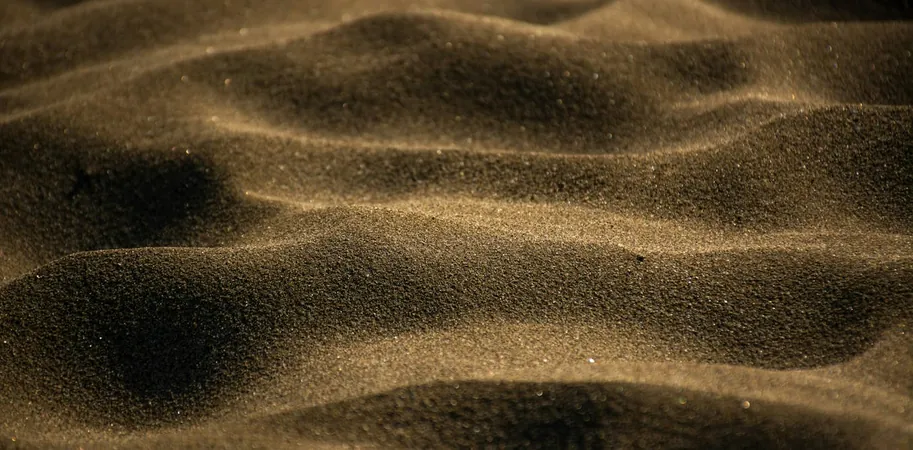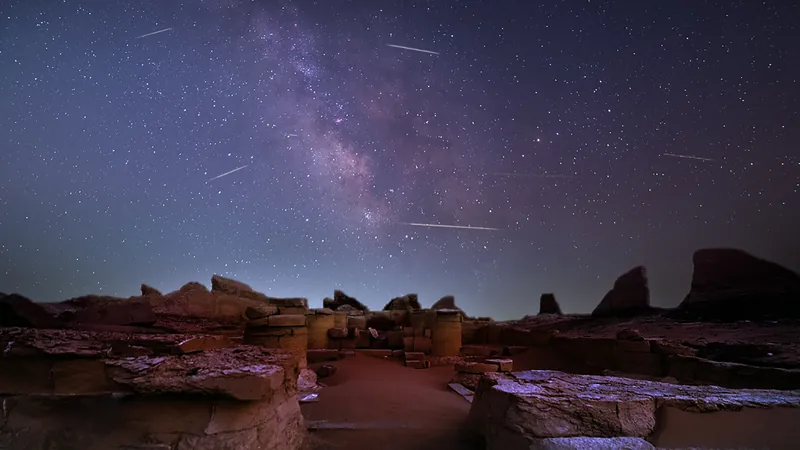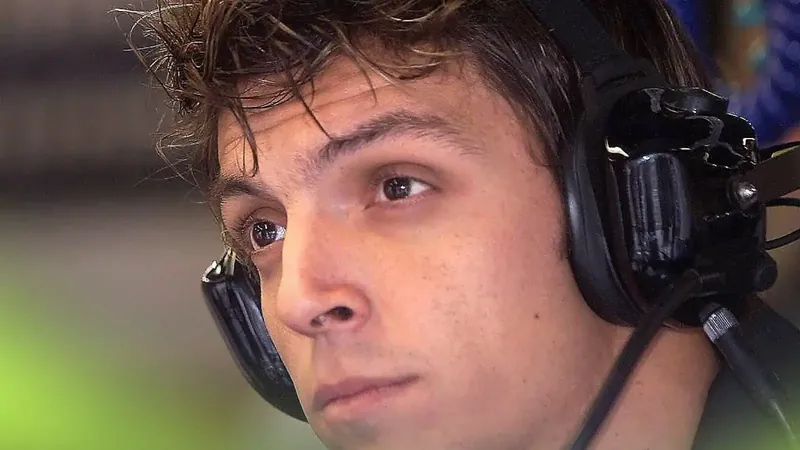
Groundbreaking Discovery: Scientists Unveil Hidden Swirls That Control the Flow of Sand, Rocks, and Snow!
2025-08-26
Author: Emily
The Surprising Secrets of Granular Movement
What appears to be a simple flow of sand, gravel, or snow may actually conceal complex swirling currents beneath the surface. Recent research uncovers that while grains mostly tumble downhill in landslides—following what is termed the �22primary flow�22—some grains perform a fascinating dance, moving sideways or swirling. These hidden patterns, known as �22secondary flows,�22 significantly impact how far and fast these materials travel.
A Breakthrough in Observational Science
Until now, the phenomenon of these hidden swirls remained out of reach for direct observation. However, a groundbreaking study published in Nature Communications reveals that scientists have used advanced X-ray imaging to visualize these elusive secondary flows within granular materials.
Revolutionizing Experimental Methods
Researchers embarked on a bulldozing experiment using glass beads—a perfect model for granular behavior. By employing an innovative technique called X-ray rheography, dubbed DynamiX, they could capture three-dimensional images of the moving grains without altering their behavior. This method illuminated previously hidden currents that ripple beneath the surface.
Uncovering the Depths of Material Behavior
The study showed that while the main flow of grains moved uniformly in one direction, the subtle sideways movements represented the first experimental evidence of secondary flows. This discovery illuminates how granular materials can behave like solid structures or fluid-like substances with intricate internal movements.
Widespread Implications for Natural Disasters and Industry
While the study primarily focused on bulldozed materials, the implications stretch far and wide. Secondary flows likely influence any particle movement—from agricultural grains to vital snow plowing operations. Understanding these swirls in greater detail is essential for creating reliable predictions regarding landslides and enhancing current mathematical models that often overlook these effects.
A Foundation for Future Modeling and Safety
This pioneering research not only aids in understanding the mechanics behind natural disasters like avalanches but also promises improvements in various industrial processes, such as powder handling in pharmaceuticals and efficient snow management. Experts believe these secondary flows are a crucial aspect of granular behavior that should be integrated into realistic computational models.
Beneath Every Grain: The Hidden Forces that Shape Our World
The swirling currents beneath layers of granular materials are not just fascinating—they are fundamental to understanding the complexities of interactions in both nature and technology. This new clarity on granular behavior marks a significant step forward in our quest to harness, predict, and manage the powerful forces at play in our environment.









 Brasil (PT)
Brasil (PT)
 Canada (EN)
Canada (EN)
 Chile (ES)
Chile (ES)
 Česko (CS)
Česko (CS)
 대한민국 (KO)
대한민국 (KO)
 España (ES)
España (ES)
 France (FR)
France (FR)
 Hong Kong (EN)
Hong Kong (EN)
 Italia (IT)
Italia (IT)
 日本 (JA)
日本 (JA)
 Magyarország (HU)
Magyarország (HU)
 Norge (NO)
Norge (NO)
 Polska (PL)
Polska (PL)
 Schweiz (DE)
Schweiz (DE)
 Singapore (EN)
Singapore (EN)
 Sverige (SV)
Sverige (SV)
 Suomi (FI)
Suomi (FI)
 Türkiye (TR)
Türkiye (TR)
 الإمارات العربية المتحدة (AR)
الإمارات العربية المتحدة (AR)